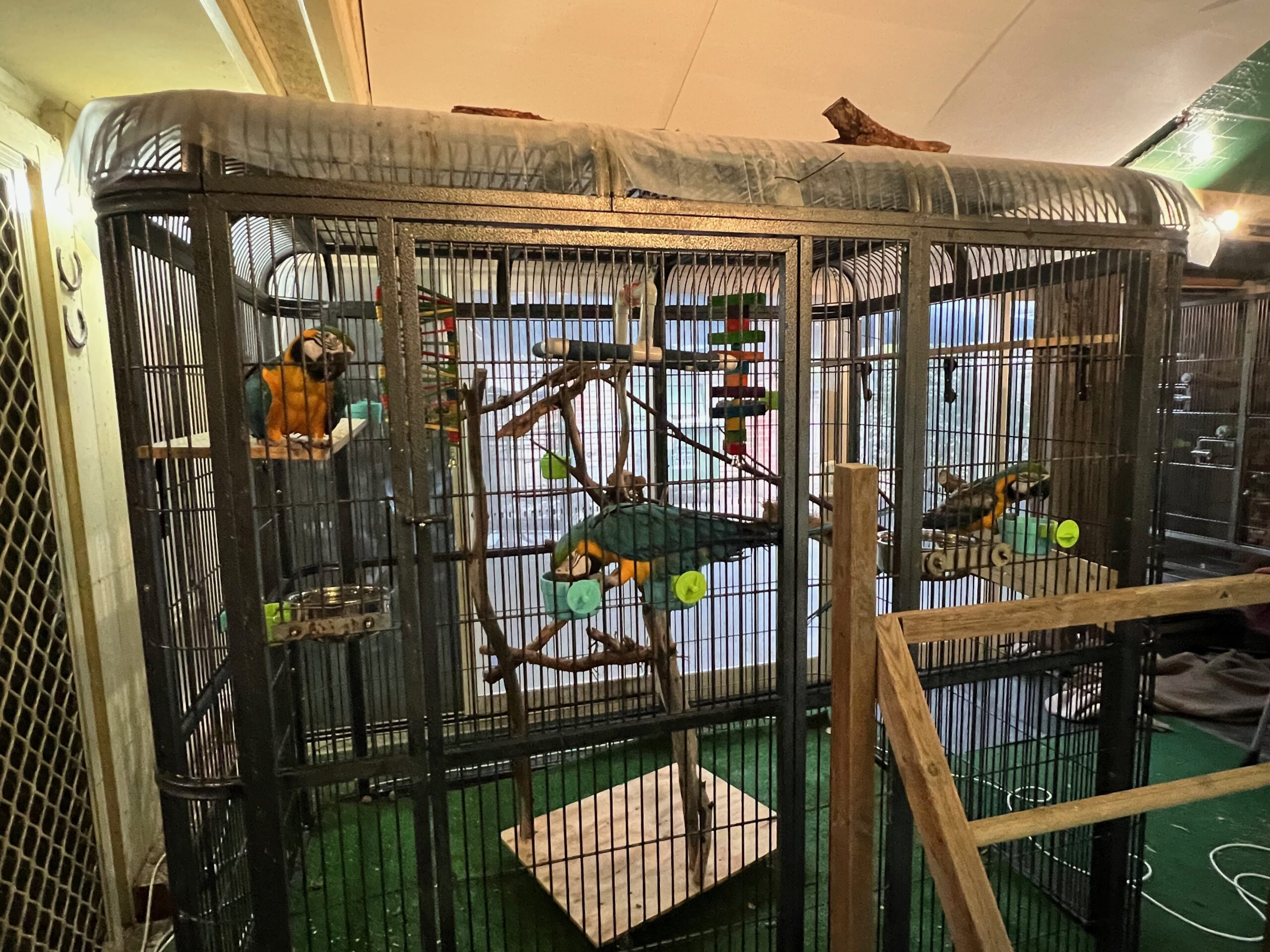How to Fix Birds Not Getting Along
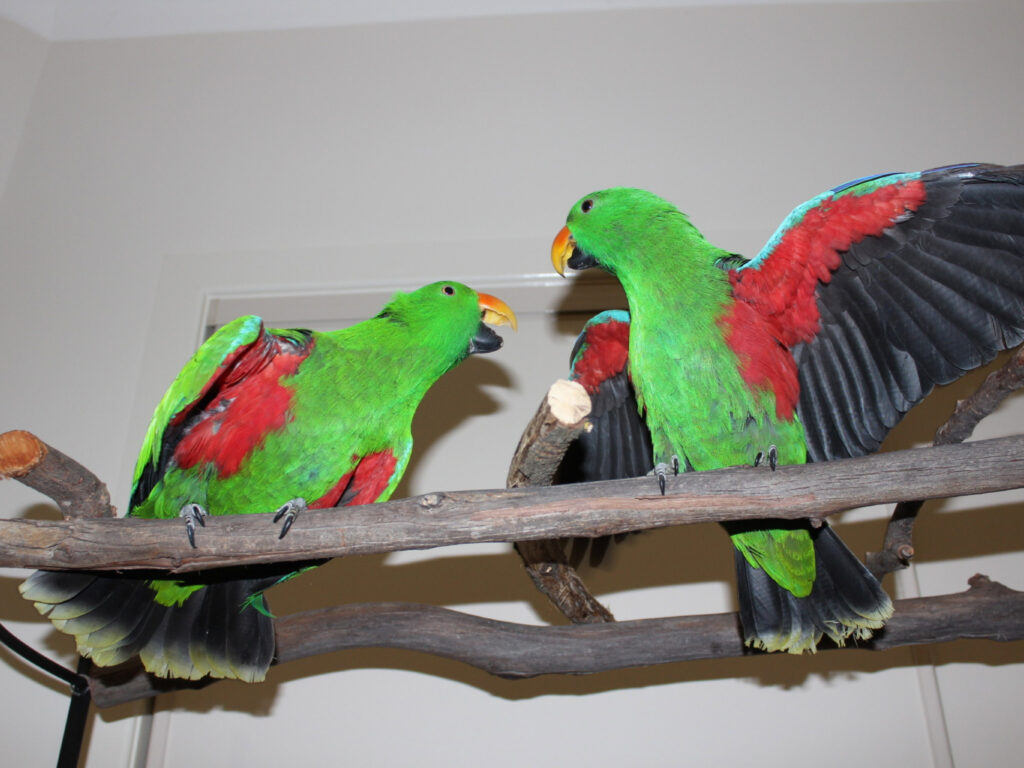
So your birds fight? Or you want to combine birds into one cage?
There is one main reason that birds will fight or not get along: resources. They defend them, they fight to get them and they're always looking for them. The hardest part of this, is recognising what those resources are. The obvious ones include food bowls, favourite perches, a mate, a nesting spot. Maybe the less obvious resource they may want access to is you and your attention. In a nutshell, a resource is anything that is of value for some reason to the bird.
A bird training plan to help birds get along, should include 3 points:
- Set yourself up for success. Once you realise resources are what a bird is fighting for, you need to try to duplicate those resources in any shared space. What I mean by this is if you have 2 birds, you need 2 x the resources. For example, 2 food bowls. It should also be noted that it's not enough just to have 2 foodbowls. They need to be of the same value. This means the same height in the cage, the same size, the same contents. Position is everything. Opposite sides of the cage, so that one bird can't take possession of both bowls at the same time, but same height, so they both feel the same level of safeness as a spot to sit.
- Design your cage layout so there are visual barriers. Birds need to be able to get away from each other from time to time. This means an ability to get out of the line of sight of each other. A good multiple bird setup will have something birds can hide behind. I use fresh foliage in my cages to create this barrier, but thick hanging toys work well too.
- Training sessions. I love to do target training in cases with multiple aggressive birds. I'll explain it more below but in short, you're looking to actively train a level of calmness around each other and active training sessions of some sort will help you achieve this. Book a consult to setup a training plan.
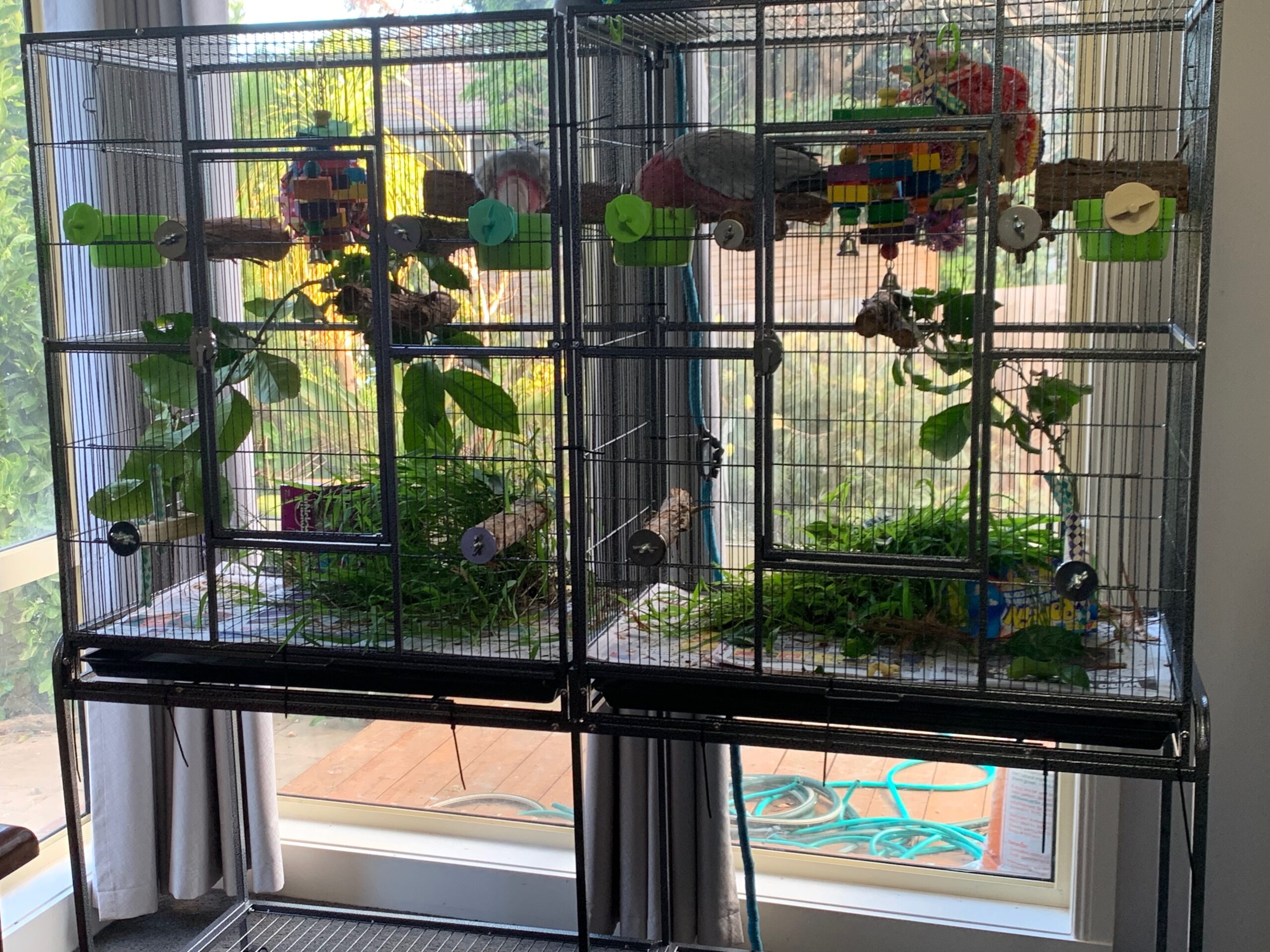
Target training can be used to direct birds further apart or closer together. Ideally you work with one bird at a time at first, but do it in view of the other bird. The reason for this is because it is important for birds to see each other behaving in a non-aggressive way and there is nothing aggressive about touching a stick. If you're doing it right, you can gradually shape the behaviour to doing it closer to the other bird and even eventually work with both birds. The goal here is essentially to find fun, highly rewarding activities, that they can both participate in at the same time - without being aggressive.
It's important to remember that a bird's personality is a part of this. They have a mind of their own, they form likes and dislikes and that includes with each other. You can't always pair two birds off, but you can teach basic respect and tolerance. There are going to be cases where it simply isn't possible to put two birds in the same cage for safety reasons. This isn't necessarily forever. A bird in a neighbouring cage can still be company for your other bird.
Be realistic as certain breeds don't blend well. You shouldn't be putting certain types of birds together. Size is relevant. For example, a macaw can injure a smaller bird. Certain breeds are often known for displaying more territorial behaviours. (Conures are one I have found to like their space from other types of birds.) Nesting/mated birds likewise can be more territorial.
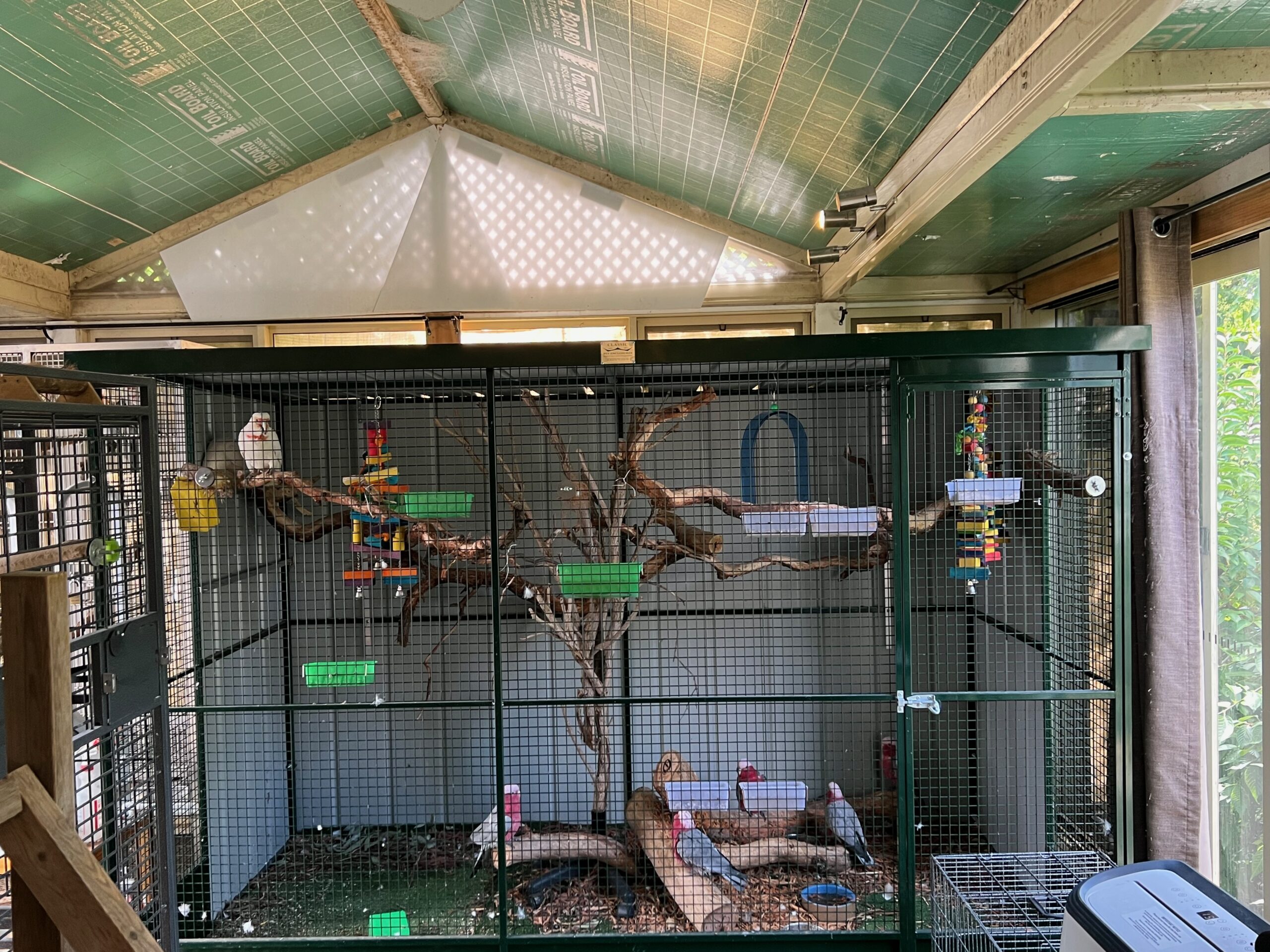
I have seen bonded birds attack each other while raising their own babies. So always be observant. Birds can change their minds about who they will allow near them. It's also worth noting that sometimes they will pick on a sick bird - so don't rule out a vet check when you have fighting birds. I've also seen birds change partners over time. It's an internet myth that people like to spread that birds are usually monogamous. It's true in some cases, but not all and can change over time.
Time is your friend. You may need a physical barrier until they are ready to share. Neighbouring identical cages for a period of time does help. Ideally, the cages should mirror each other so that one can't be perceived as more valuable than the other. Similarly making sure that you give them both the same activities to complete at the same time. For example, let both birds shred a box at the same time in the bottom of their respective cages.
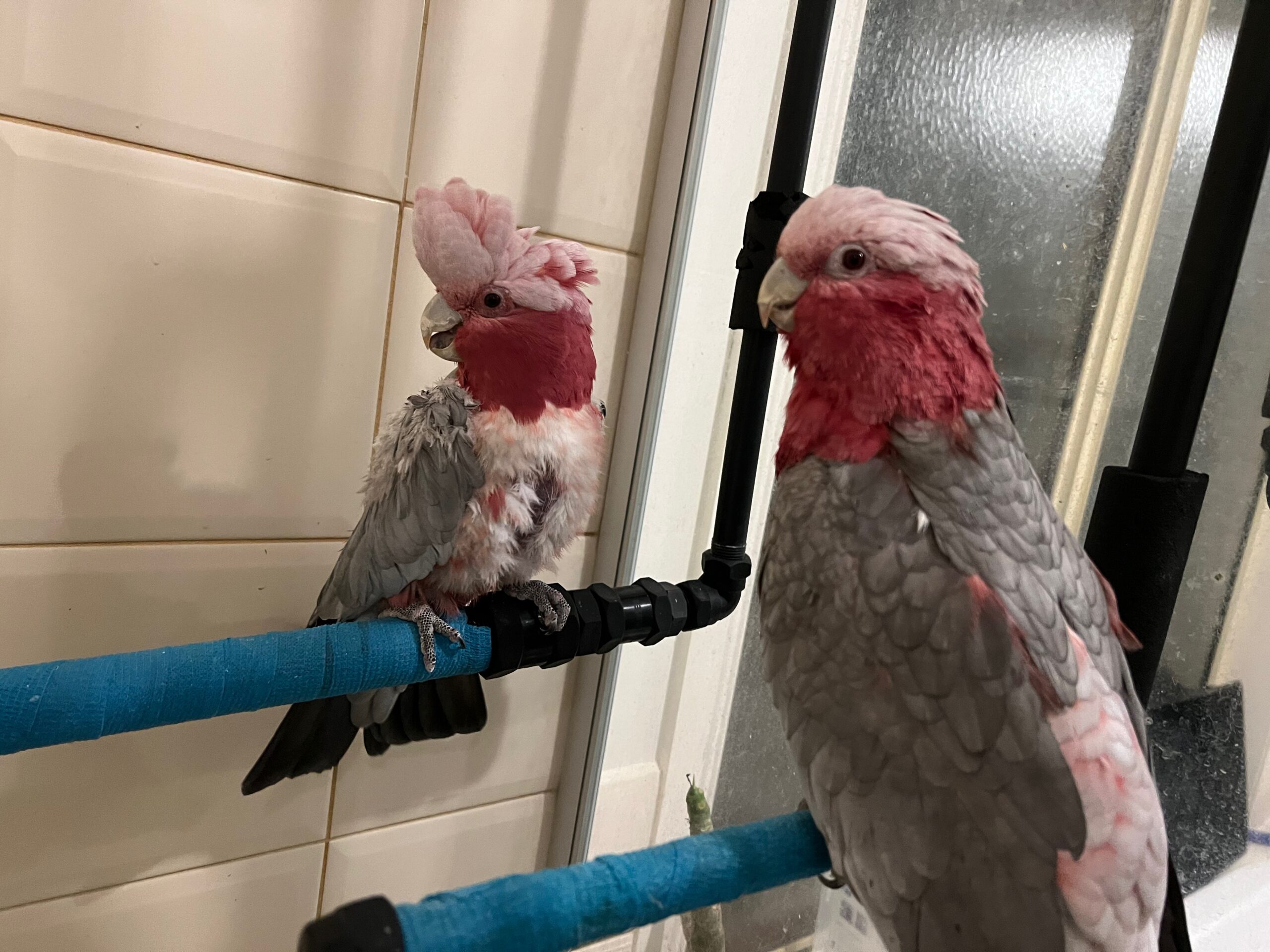
The number one way that birds lose toes is from a nearby aggressive display from another bird. Please keep in mind that you may need an inch or two between cages to prevent birds biting off each other's toes. Covering the top of a cage with clear plastic can also be a good idea if birds like to land on each other's cages. I love to use those cages with a divider down the middle that can later be removed, but it won't suit all situations.
If you are thinking about adding another bird to your flock as company for an existing bird, consider going to a rescue who may have a foster trial arrangement. It may give you a chance to let your bird choose its own friend. In fact, some pet stores and breeders offer birdy dating. It can't hurt to ask for this service.
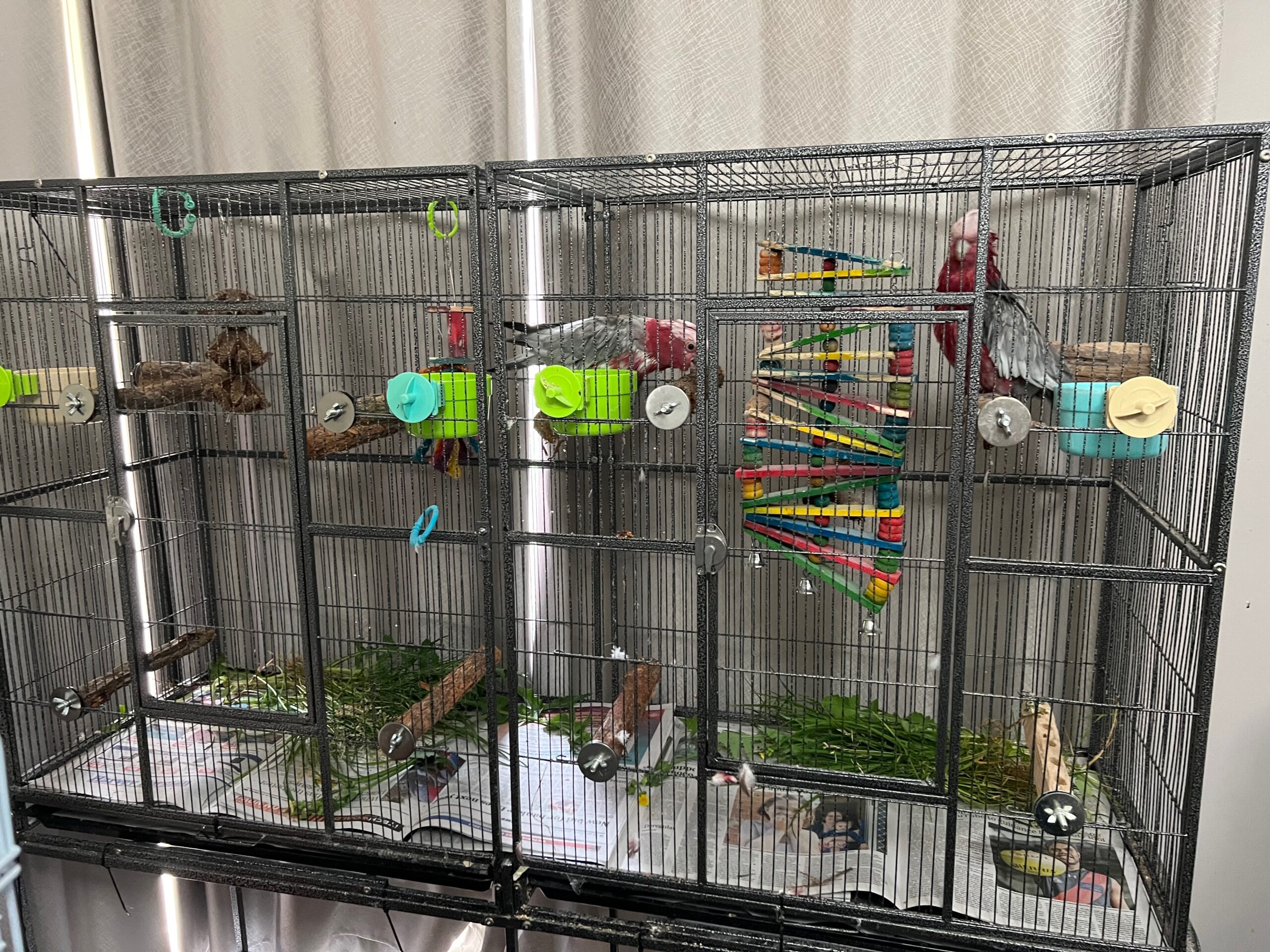
In general, I am always in favour of having more than one bird in a household. I see a lot less mental health issues in birds that come from a multiple bird household. Even if they aren't caged together and aren't the same breed - they are company for each other. They will form their own type of flock. My macaws guard my budgies. The clinic quakers were staying with me and screamed for help when my elderly galah had a heart attack the other day. Not all of my birds seem to like each other but I don't envy anyone who tries to break into my bird room. They'll have the whole flock after them.
Finally, never say never. The two eclectus parrots in the featured picture that goes with this article appeared to hate each other for years. They couldn't land near each other without lunging and biting. These days, they're bonded. They feed each other and sleep on the same perch. They occasionally squabble but if I separated them now, they'd be fighting to get to each other. Sometimes it's just a matter of time - even if it's years.
